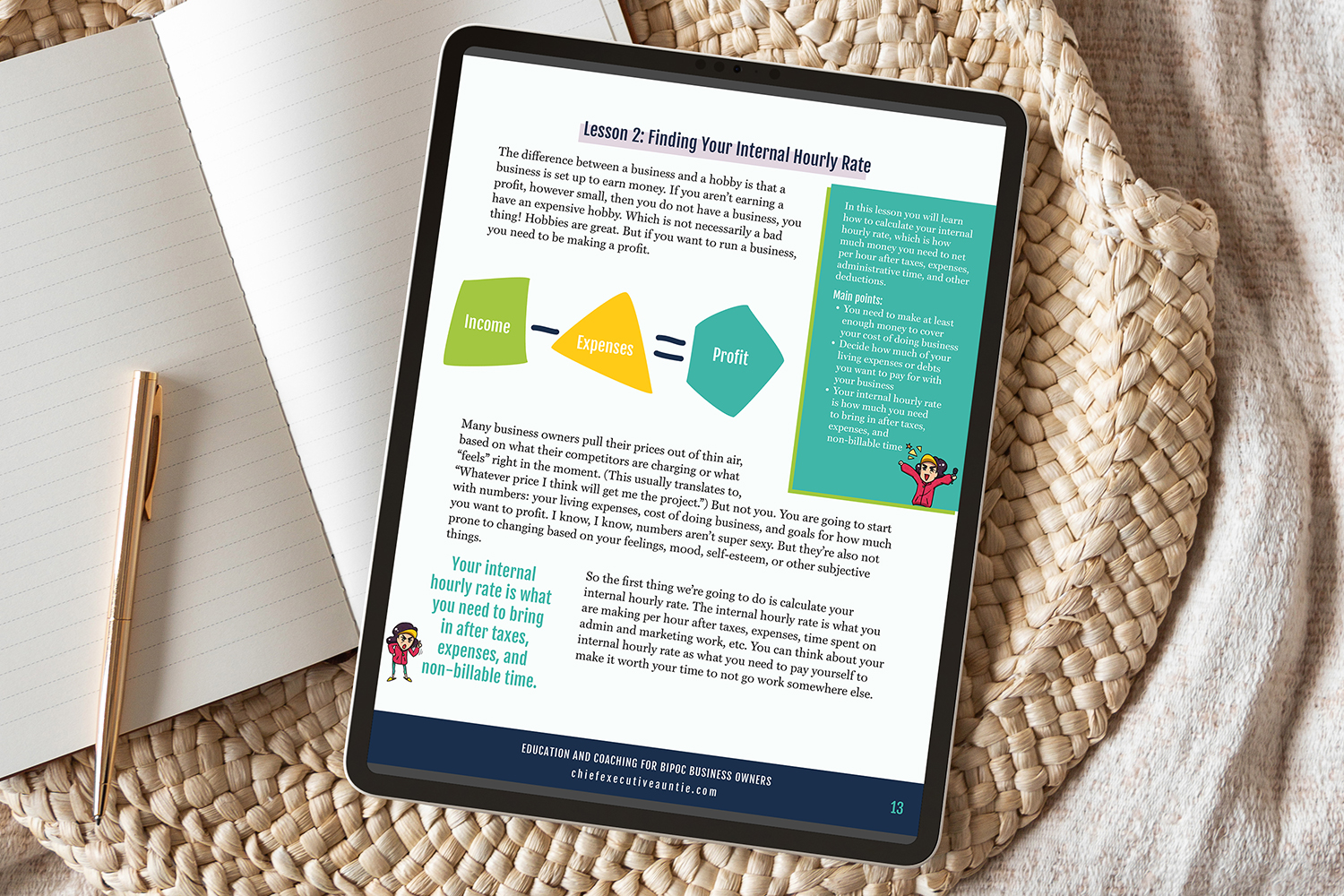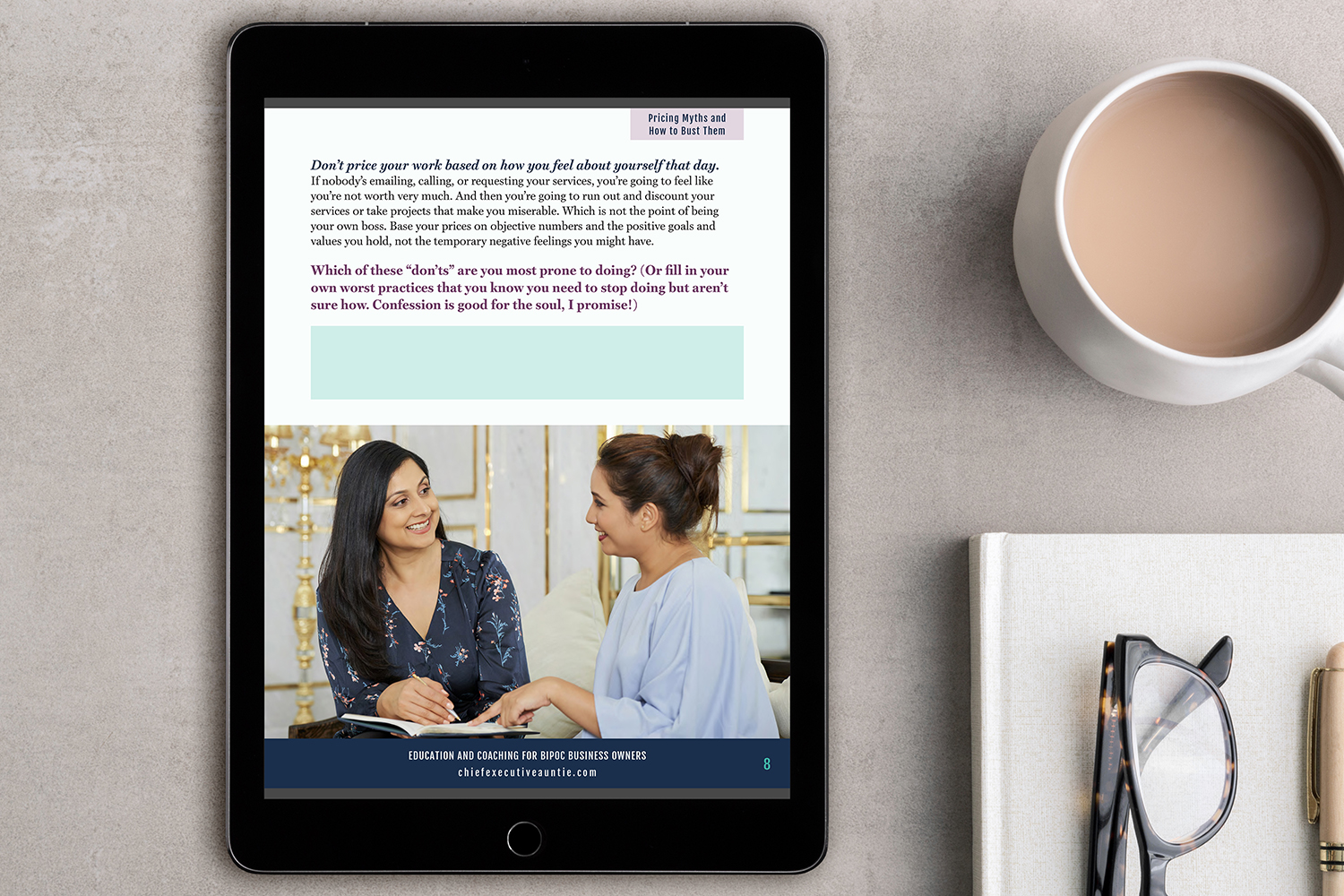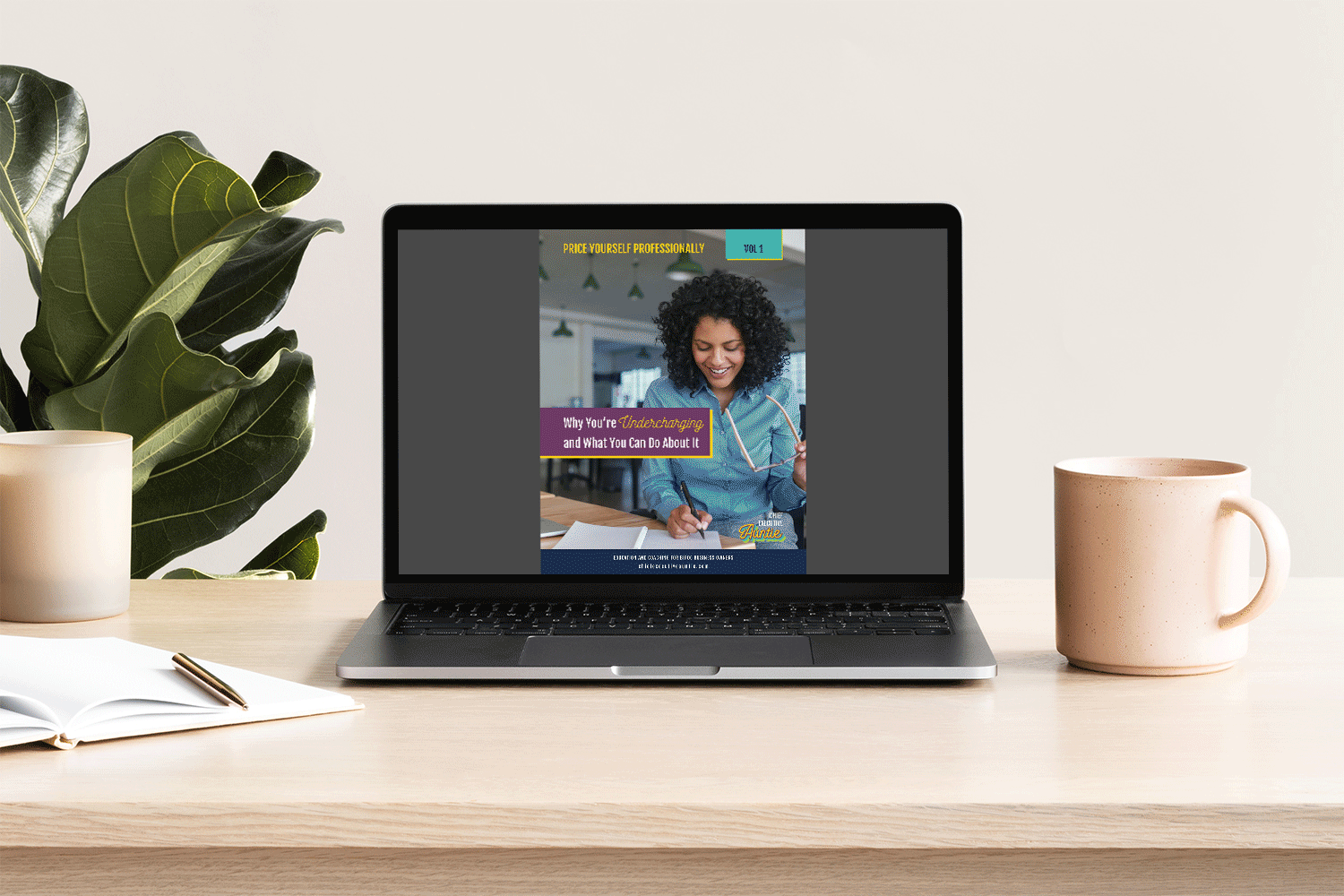Interactive Pricing Workbook

The Need
Jennifer Duann Fultz is a freelance educator and instructional writer who focuses on helping people rethink their approach to pricing, among many other things. After selling out a 90 minute live class on pricing in 2019, she wanted to turn that content into an evergreen course that empowered people to understand their own numbers as well as limiting mindsets.


The Project
Jenn developed a course that included live lessons with a cohort of learners, video lessons, and a workbook for students to dig deep into their pricing. She wrote the workbook herself, including several features that would translate perfectly into interactivity in the final PDF. The goal of interactivity here was both to reinforce learning and concepts, as well as remove barriers to to process.
Jenn has an extensive visual brand identity with a defined color palette, typography treatments, and a character she had commissioned multiple illustrations of for use in her communications. Her brand voice is combination of maternal and no-nonsense, with warmth and encouragement, which the design of the workbook needed to convey.
The Process
I developed several text features that utilized Jenn’s branding in ways that draws your attention and reinforces messaging. I adapted her existing text treatments to longer form text, created lesson preview sidebars and pull quotes using her characters, and developed printables that collected the user’s answers and calculations in one spot, so they could put a hard copy up in their workspace for motivational purposes. I also developed an array of organic-feeling shapes to enclose text in diagrams and equations, along with illustrated arrows and operators.


Jenn was very adamant that the learning be supported by quizzes that accelerated or checked understanding. The first example of that was a quiz that counted the self-selected statements the students identified with. A running tally was generated on the page, that they could then compare to one of three static category boxes.
The end of the workbook also included a multiple choice quiz in which students could see immediately if they were right or wrong and explanatory text was revealed relating to each answer. By including this material right in the workbook rather than on the course platform or a separate quiz site, students were able to check whether they had absorbed the concepts with minimal disruption or confusion.


Transfer fields were used throughout the book to allow students to read through a few paragraphs of instruction and then capture their own thoughts about the material and how it related to them. Two separate tables helped them to identify and rewrite their personal pricing beliefs, then transferred their updated beliefs to a printable.
Tapping into Jenn’s naturally encouraging nature, I developed a system where the student would hit a button with an affirmation at the end of each lesson, which would cause a badge on the page to unhide, marking the lesson as complete. Additionally, on the table of contents, an identical (but smaller) badge would also appear next to the lesson title, so a learner having saved and closed the workbook could see how far they had progressed from the previous work session and jump straight to new material.

The most straightforward part of the workbook is 4 pages with categories and line items for the user to record living expenses and the cost of doing business. Rather than accomplish this in a dry spreadsheet, which would be difficult to link to directly to, we incorporated these calculations directly into the workbook, where it could be fully branded as well as include explanatory text. The resulting numbers are used in later calculations as well, so a student wouldn’t have to do the work in a separate spot and copy/paste the information in, possibly resulting in an accidentally-copied formula or some other issue.
Students are also asked about target income percentage from their business and how many hours per month they would like to work. They also enter information about billable vs non-billable time, to account for all of the time they spend working in their business. The calculations take all of the entered information into account, as well as a typical ratio of billable to unbillable time and a percentage for taxes and calculates an hourly client rate for the user. One participant in the live cohort mentioned that the rate calculations in the workbook “outsmarted” her feelings, showing her the true number she should charge instead of letting her uncertainty about pricing lead her to reduce the rate.


Rounding out the workbook was a series of stock photography I helped acquire for the project and use in Jenn’s business. Her target market is business owners of color, so the stock photograph largely illustrates them taking part in believable entrepreneurial activities, reinforcing her brand messaging.
Jenn’s course has been well received and after the live cohort she has made the workbook available as a stand-alone product where it continues to benefit entrepreneurs struggling with pricing themselves accurately and compassionately.









